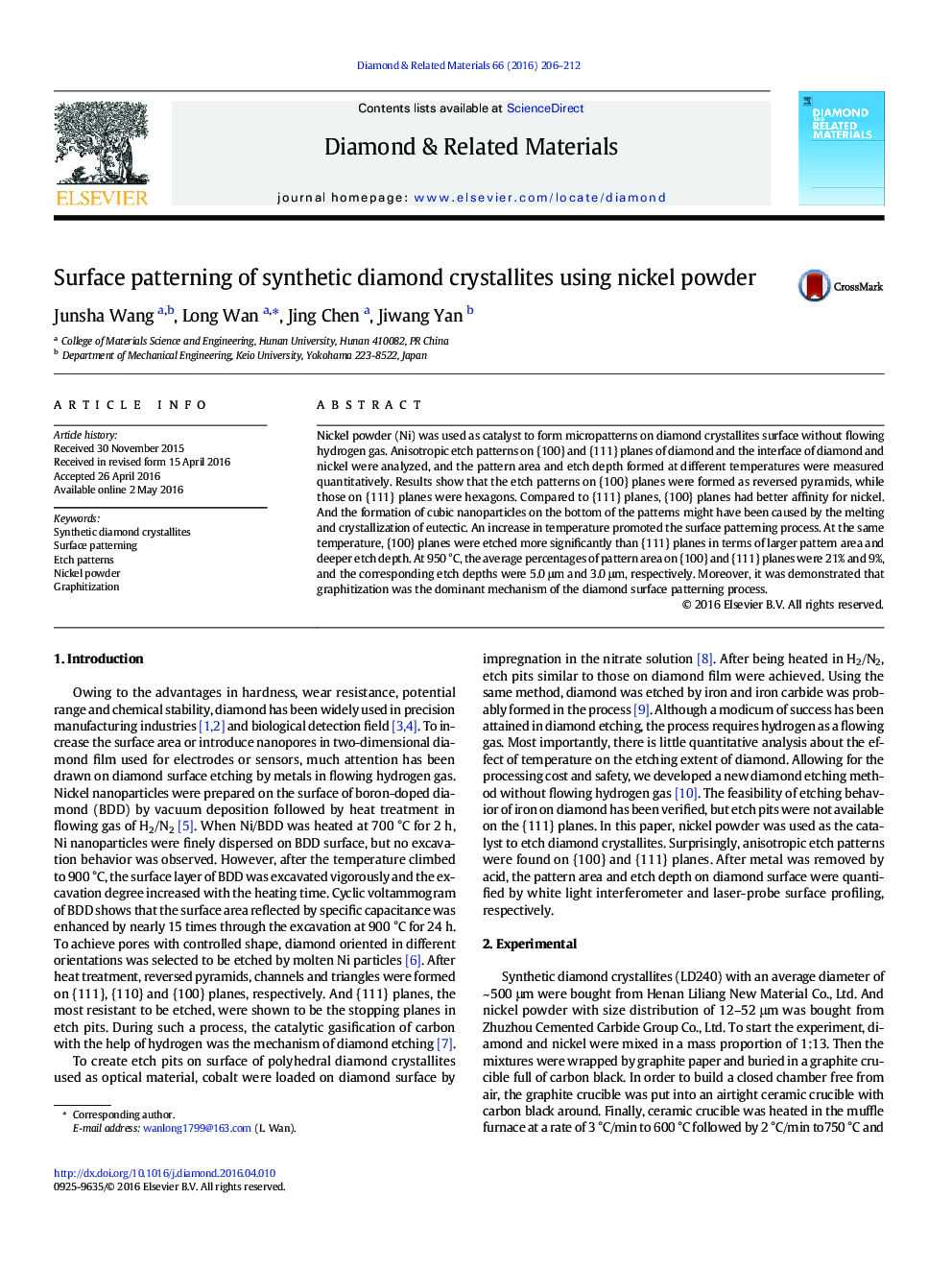| Article ID | Journal | Published Year | Pages | File Type |
|---|---|---|---|---|
| 701782 | Diamond and Related Materials | 2016 | 7 Pages |
•Diamond crystallites with all planes patterned were achieved without flowing gas.•Reversed pyramids and hexagons were formed on {100} and {111} planes.•Effects of temperature and orientation on pattern area and depth were quantified.•Graphitization was demonstrated to be the dominant etch mechanism.
Nickel powder (Ni) was used as catalyst to form micropatterns on diamond crystallites surface without flowing hydrogen gas. Anisotropic etch patterns on {100} and {111} planes of diamond and the interface of diamond and nickel were analyzed, and the pattern area and etch depth formed at different temperatures were measured quantitatively. Results show that the etch patterns on {100} planes were formed as reversed pyramids, while those on {111} planes were hexagons. Compared to {111} planes, {100} planes had better affinity for nickel. And the formation of cubic nanoparticles on the bottom of the patterns might have been caused by the melting and crystallization of eutectic. An increase in temperature promoted the surface patterning process. At the same temperature, {100} planes were etched more significantly than {111} planes in terms of larger pattern area and deeper etch depth. At 950 °C, the average percentages of pattern area on {100} and {111} planes were 21% and 9%, and the corresponding etch depths were 5.0 μm and 3.0 μm, respectively. Moreover, it was demonstrated that graphitization was the dominant mechanism of the diamond surface patterning process.
Graphical abstractFigure optionsDownload full-size imageDownload as PowerPoint slide
